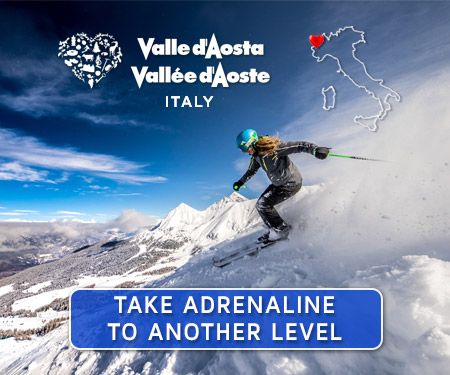
Holly Price
Oct, 31 2024- 5 mins
Ski Trip Checklist: What should I take when I go skiing?
Congratulations! If you’re reading this, it means you’ve finally booked that trip to the mountains and now you’re wondering (in a slight panic) what you should be taking with you. Fear not, we’ve done this a million times and now we’re bringing our expertise to you. This is our failsafe guide to what you should pack for your skiing or snowboarding trip.
Base layers
Base layers, or thermals as they are more widely known, are essentially your first layer of technical clothing above underwear. While any thermals are better than none, you’ll want to opt for ones that have good insulation, breathability and wick-away properties because not only will you get very cold, but you’ll also sweat a lot. Although expensive, merino wool is the best thermal material available.
Don’t make the mistake of skipping your thermals because you’re heading out later in the season - I’ve once been caught out in late April in Tignes and spent each chairlift ride shivering because I was expecting wall-to-wall sunshine but instead got an arctic blast (not complaining, conditions were amazing.)
Underwear & Pyjamas
Of course, this is an obvious one but the obvious ones are very easy to forget when you’re focussing on the technical stuff. Nobody wants their first in-resort purchase to be some garish souvenir pyjamas or underwear because you forgot yours. It’s also worth noting that you might want to double up on the underwear because you’ll be showering and changing after each day’s riding before dinner - unless the après turns into an all-nighter….
Socks
Just like your thermals, socks play an important role in your comfort during your day of riding. Too thin, and your feet will be freezing, too bulky and not the right material and your feet will be suffocating. Wool is again the best choice for both breathability and insulation, because of the way its natural crimps and bends trap air for warmth while transporting sweat away from your skin. I’d suggest investing in some Smartwool® socks, which are tailored to both skiing and snowboarding and are probably the comfiest things I’ve ever put on my feet.
Goggles and Sunglasses
This is an obvious one, and for your first ski trip, the choice of goggles on offer can be quite overwhelming. Ultimately, all you need your ski goggles to do is protect your face from wind, snow, UV and other potential debris, while giving you good enough visibility to get down the hill. Don’t be fooled by ‘anti-fogging’ technology - even some of the best-branded goggles in the world can steam up if the conditions are right.
Make sure you also throw in a decent pair of sunglasses for your après and in-resort walkabouts too, it’s really bright on a bluebird day in the mountains.
Gloves
Another very important one, gloves are an absolute non-negotiable, as your digits get surprisingly frozen, especially during those long chairlift rides. If you’re buying for the first time, you’ll be faced with the ‘gloves vs mittens’ dilemma, but the deciding factor is that mittens are ultimately much warmer than gloves, because your fingers are all together and help to generate more warmth. I’d also recommend taking some cheap liner gloves (these go underneath your gloves/mittens) with grippy thumbs and fingertips so that you can still use your phone without completely exposing your hands.
You should also make sure that your mittens or gloves have wrist straps so that they don’t go walkabout when you take them off. I’ve lost many a mitten from the heights of a chairlift.
Outerwear
As the name suggests, your outerwear is the gear that will face the elements. This is usually made up of a jacket and pants, or salopettes. For complete comfort (especially for snowboarders who, yes, spend so much time sitting down or bending over to secure their bindings) I’d seriously recommend getting yourself some bib pants. Life-changing is an understatement.
Helmet
I’m not even going to reel off the reasons you should be taking your helmet, this should be the very first thing you buy when you take up the sport. It’s also worth noting that children must wear a helmet in Italy and some areas of Austria, and you’ll be fined if they don’t have one. In Nova Scotia, all adults must also wear one. As they do take up quite a bit of space, my favourite tip for travelling with your helmet is to clip it to your hand luggage bag - just be careful not to bash it against anything.
Rucksack or slope-friendly bag
Speaking of hand luggage bags, a rucksack is another in-resort essential, as it will allow you to take everything out with you on the slopes for the day and remove any layers if you get too hot. If you don’t have that much stuff, a crossbody bag is a handy choice, as you can reach all of your essentials without needing to take the bag off, and you won’t be burdening the designated rucksack carrier with your belongings.
Suncream
The UV is strong up on the slopes, and you’re essentially surrounded by a giant reflective surface meaning absolutely every bit of sun is going to bounce back to your exposed skin. Take a tip from Baz Lurhmann and wear sunscreen.
Lip balm
Dry, cold air + your open-mouthed concentration face while riding = a recipe for the driest lips in the world. Take a few sticks of lip balm and always keep one in your pocket, it’s handy if they have an SPF factor too because swollen, sunburned lips definitely aren’t fun.
Beanie Hats
Not only will your trusted beanie hat keep your head warm when you take off your helmet at après but it will also disguise any helmet hair you might be suffering from.
Buff/ Neck Warmer
When you’re travelling downhill at speed, you’ll be surprised at how cold your exposed skin gets. A buff or neck warmer is a great way to ensure protection from wind burn and will keep you toasty during chairlift rides. I recommend getting a long merino wool or fleece one that you can pull up around the bottom of your face when you need to.
Gadgets
Your final check should be that you’ve packed your essential gadgets for the trip. A portable phone charger is a good idea for long days on the slopes, your camera to get all of that footage and a plug adapter to suit the local power outlets in your destination. Oh, and while we’re doing a final check, make sure your passport is valid - nobody wants to be the one staying home because they didn’t check the expiry date!
What do I wear in the resort when I’m not skiing?
If you’ve never been to a ski resort before, you might be wondering what on earth they all wear up there. However, it’s pretty much just normal stuff. A lot of it depends on the time of the season and how commercial your chosen resort is - most have a great reputation for snow clearing which means the roads and footpaths are usually free of snow, but to be safe I’d recommend packing a pair of durable, watertight boots like the classics from Sorel or a decent pair of walking shoes. In terms of clothes, think winter smart casual with jeans, jumpers and shirts.






